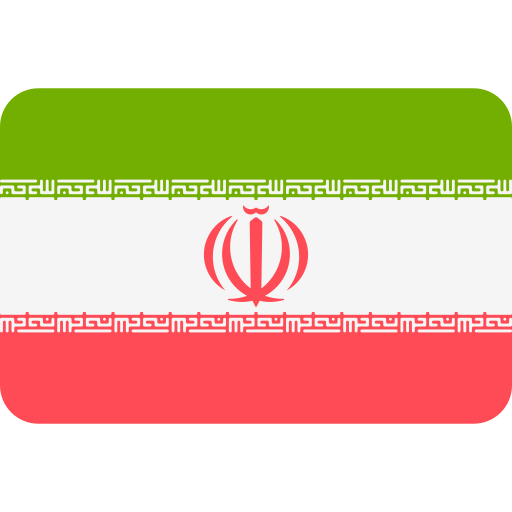Name and BackgroundThe
Central Bank is the core financial institution of the Islamic Republic of Iran, established in 1960 and headquartered in Tehran, the capital of Iran. As an important financial regulator of the country, the central bank shoulders the responsibility of managing the country's monetary policy, exchange rate stability and the soundness of the financial system. Its shareholders are mainly from the national government, are state-owned banks, and are not listed on the stock market. The central bank's responsibilities cover a wide range of economic functions, including issuing currency, managing foreign exchange reserves, supervising financial institutions, and ensuring the stability of the financial system.
Scope of ServicesThe
central bank's services are mainly concentrated in Iran, and although its functions are at the national level, it also has some influence in the international financial system. The bank does not have large-scale offline branches, but as a national bank, it functions nationwide through cooperation with other banks, monetary policy enforcement, etc. The distribution of ATM outlets is relatively limited, but it can effectively cover the main financial needs of the country through various cooperative networks.
Regulation & ComplianceThe
Central Bank is supervised by the Iranian government and relevant financial regulators and is responsible for maintaining the stability of Iran's monetary system. As Iran's core financial regulator, the central bank does not participate in the International Deposit Insurance Scheme, but it has a domestic savings insurance mechanism. In recent years, central banks have implemented strict monetary control policies in terms of compliance and have been constantly monitoring the impact of international sanctions on their regulatory capabilities.
Financial healthAs
a national bank, the financial health of the central bank does not rely solely on earnings, but focuses on its capital adequacy ratio and liquidity coverage ratio to ensure that it can cope with the country's economic fluctuations and changes in the foreign exchange market. Iran's financial system is facing high external pressures, but the central bank remains committed to maintaining sufficient reserves to support the country's monetary policy. Specific indicators such as non-performing loan ratios are not readily available because the bank has few details to disclose, but its loan and deposit management is usually directly affected by government policies.
Deposit and loan productsAs
a national bank, the central bank's deposit and loan interest rates are mainly controlled by the government and used to regulate the development of the domestic economy. It does not directly offer a wide range of retail banking products to the public, but rather influences the market by controlling the liquidity of the entire banking system. In terms of personal deposits, interest rates are usually subject to the policy guidance of the central bank, and the interest rates of time deposits and demand deposits have a certain degree of flexibility in adjustment. In terms of loans, the interest rates for housing loans and car loans will be adjusted according to the government's economic goals.
List of Common
ExpensesSince central banks are primarily responsible for macroeconomic policy formulation and supervision, they do not directly address the day-to-day expenses of retail banks. However, through the supervision of commercial banks, the central bank indirectly affects the administrative costs of deposits and loans. For commercial banks in Iran, common fees such as account management fees and transfer fees are mainly set by each bank itself, but are strictly regulated by government policies.
Digital service experienceThe
digital services of the central bank are relatively basic, mainly relying on the government's digital monetary policy and the development of financial technology. Despite the challenges of international sanctions in some areas of technology, the central bank is driving the digital transformation of the domestic banking system. Some banks have developed apps and online banking systems that provide facial recognition, real-time transfers and other functions, but these services are mainly concentrated in the domestic market. The support of robo-advisors and open banking APIs has not yet been popularized, and the development of digital banking is still in its infancy.
Quality of customer serviceAs
a national bank, the central bank's customer service is more focused on coordination and supervision with other financial institutions, rather than directly facing ordinary consumers. For cross-border users, especially Iranian citizens outside of Iran, language support for customer service is usually limited to Persian. However, domestic users can get 24/7 support through phone, live chat, etc., especially when it comes to financial policy and macroeconomic issues, and the central bank provides multiple channels to answer questions. The central bank is not directly involved in the complaint handling mechanism, but it has taken regulatory measures to ensure that the major commercial banks maintain a high level of customer service quality.
Security MeasuresAs
Iran's core financial institution, the Central Bank takes strict measures in terms of capital security to ensure that Iran's currency circulation is not threatened from external threats. In response to financial fraud, the central bank has implemented a real-time transaction monitoring system and strictly requires commercial banks to be equipped with anti-fraud technology. In terms of data security, the Central Bank's system uses security certifications that meet international standards, although some of its international cooperation is limited due to sanctions. Data breaches have been rare in recent years, but their security is still improving.
Characteristic services and differentiationThe
characteristics of the central bank in terms of services are mainly reflected in financial supervision and policy regulation. It does not provide financial products directly to individual users, but ensures that the services provided by banks are in line with the national economic strategy through the supervision of commercial banks. The Iranian government is providing investors with more options in line with the Sustainable Development Goals through green financial products and socially responsible investments (ESG investments) promoted by the Central Bank. In particular, there are more and more policy-based financial services in China, and there is an increasing number of customized services for different classes, especially financial services that support the country's economic goals.










